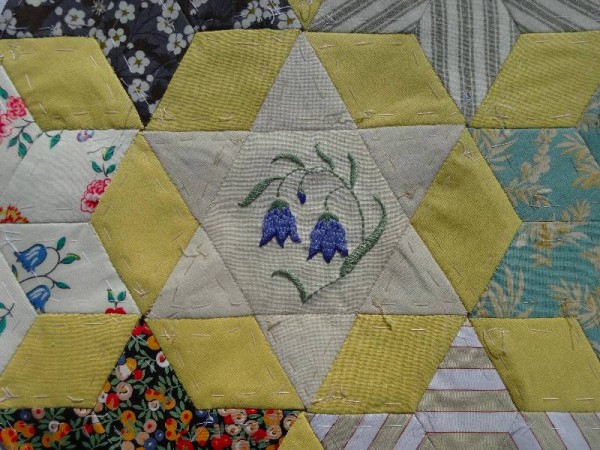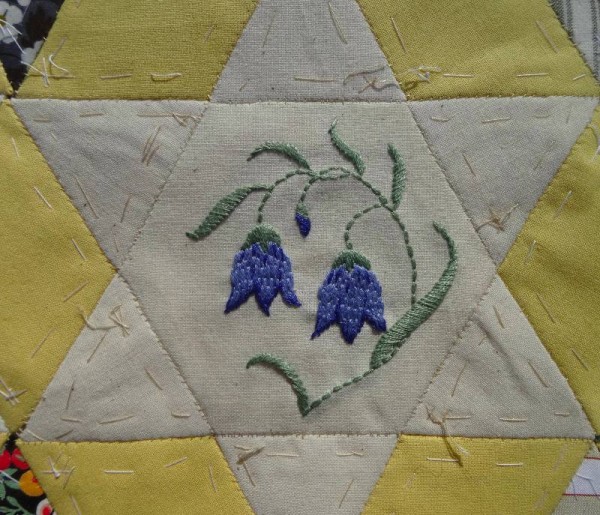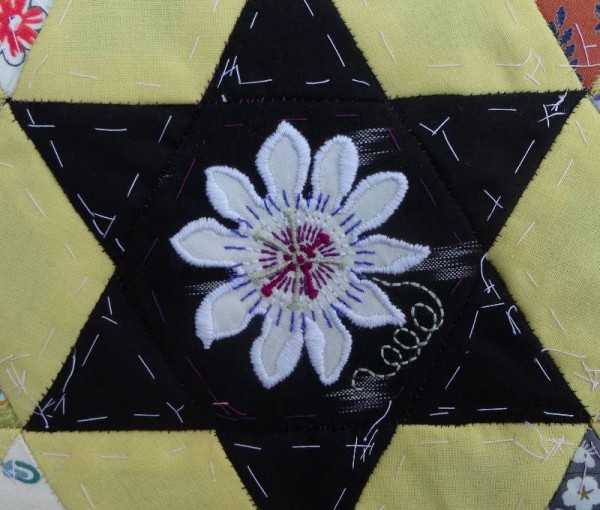The latest flower embroidered for the altar frontal is the harebell. To be seasonally appropriate, I should have made it a bluebell as bluebells are now carpeting woodlands with a wonderful hazey blue, while you’d have to wait until July to see a harebell. But I now discover that for all the superficial similarity between these two plants, they are not closely related. The harebell is a campanula or bell flower (Campanula rotundifolia), while the bluebell is a hyacinth (Hyacinthoides non-scripta) as its smell bears out. Bluebells like rich, damp soil with lots of leaf litter and so flourish beneath sun dappled woodland canopies but the harebell lurks in longer grass, just a bell or two of tissue paper fragility supported on a stem of fine wire, quivering and shimmering to catch the attention of passing insects. And then, of course, is the matter of scent. The scent of the bluebell, without hyperbole, could be said to the most quintessential smell of England as half of all English or wild bluebells in the world grow in English soil. Incidentally, as bluebells cannot be legally harvested the scent can only be produced commercially synthetically. (I shall save discussion of the difference between the invasive Spanish bluebell and the wild english variety until I have embroidered and English bluebell). The lowly harebell has very little scent.
To add further to the confusion, in Scotland the harebell is known as the Scottish bluebell, probably because the English bluebell is largely absent in the Highlands, although in the southernmost parts of Scotland, the English bluebell can be as extensive as here in the Chilterns.
The harebell I have sewn in long and short stitch, back stitch for the stem and satin stitch for the leaves.





